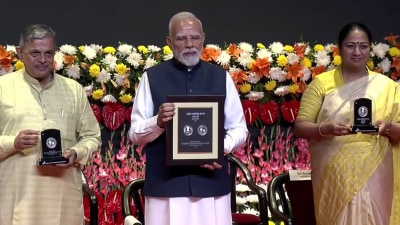Britain restores memorial of its royal outsider
LONDON, Oct 18: He was an outsider who married into British royalty, whose work for his adopted nation was undervalued in his lifetime.Ye...

LONDON, Oct 18: He was an outsider who married into British royalty, whose work for his adopted nation was undervalued in his lifetime.Yet after Prince Albert died in 1861, Britons were overtaken by contrition at their failure to acknowledge his contributions, and raised money to perpetuate his name.
The result was Victorian Britain’s most remarkable memorial the Gothic splendour of the Albert memorial, built 457 metres from Kensington Palace, a later age’s focal point for those mourning Princess Diana.
On Wednesday, Queen Elizabeth II will unveil a newly gleaming Albert memorial, rescued from decrepitude by a four-year, 17 million dollars facelift.
The intricate and ornate shrine described by Prince Charles, Albert’s great-great-great-grandson, as “one of Europe’s greatest public monuments”, is dedicated to the consort of Queen Victoria, who spent almost 40 years in mourning after his death from typhoid at age 42.
More than 100 gilders, blacksmiths, and stonemasons restored the memorial. It hadbeen in a state of disrepair for decades and was declared unsafe in 1983. “Unbelievably, there was even a plan at one stage to pull it down,” said Sir Jocelyn Stevens, chairman of English Heritage, the agency responsible for the upkeep of many historic monuments. Albert’s 200 foot-high memorial, opposite Albert hall, also named after him was the public statement to a love that dominated Victoria’s life and helped reform the 19th century British monarchy.
In 1915, during World War I, Albert’s statue was stripped off its gold to prevent it glistening at night and attracting the attention of German Zeppelins. Gilders have recovered it with 16,875 sheets of twenty-three-and-half carat gold leaf.
A 64-metre-long marble frieze running around the memorial’s base and containing 169 statues of poets, artists, musicians, and architects has been cleaned. Missing pieces were remade with Campanella marble from Italy, as used in the original.
To cap it off, a golden orb and cross accidentally shot off by Britishanti-aircraft gunners during World War II have been restored to the monument’s top. “The memorial now looks closer to its original appearance than at any time since 1915,” said Alasdair Glass, the senior project director.
Albert was never popular with the British. He was thought too dowdy, too earnest and, too German. But he began the tradition of royal males devoting their energies to public good. His greatest legacy is a cluster of museums and scientific colleges in the South Kensington area.
But in their 20 years of marriage, Victoria and Albert also pioneered the transition of the monarchy from a political into a moral force. Their image of domestic bliss — they had nine children — was the ideal that Britain’s kings and queens have since tried, with mixed success, to emulate.



- 01
- 02
- 03
- 04
- 05




























